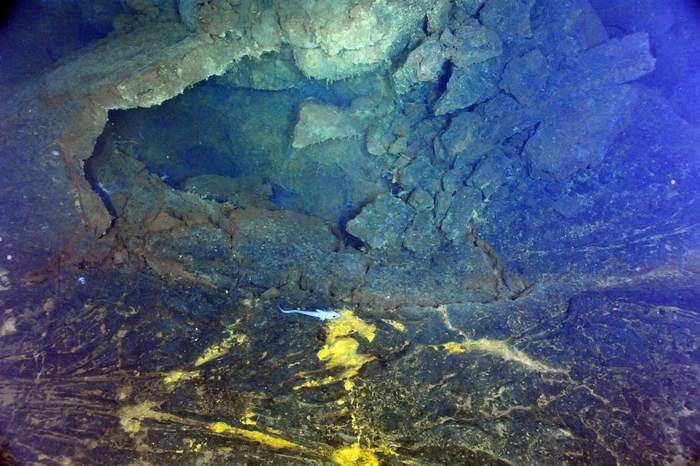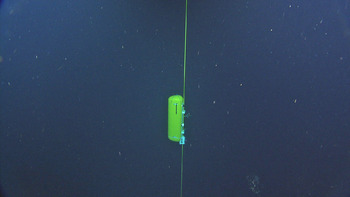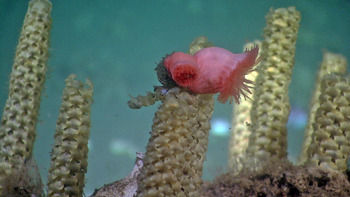...at Axial Seamount, these moorings may someday also capture the wafting of a ‘megaplume’ out of the summit of this active volcano
The R/V Thompson continues to have incredibly busy days as she and her crew finish operations and maintenance for the Ocean Observatories Initiative (OOI) Cabled Array. We are in our final days of Leg 2 of this three Leg expedition. Yesterday we investigated a new methane seep and completed installation of the Deep Profiler Mooring at the Oregon Endurance Offshore Site. We left the worksite with big smiles as the instrumented profiler pod was moving up and down the cable collecting chemical, biological and physical data.
This mooring, as well as the other OOI cabled and uncabled moorings, which rise up to ~ 9000 ft above the seafloor, will soon let any interested user mine the data (much of it streaming to shore in real-time) for information that may inform them on the ocean’s acidity in this area and anoxia events that occur when low oxygen waters waft up the continental slope and onto the margin – causing significant die off of benthic organisms. These instruments will also yield information about the chemical impacts of large storms, and indeed even about small, thin layers that host high concentrations of phytoplankton. It is estimated that these microscopic organisms, which occur not only in thin layers but throughout the sunlit portions of the world’s oceans, produce > 50 % of the oxygen in Earth’s atmosphere. The oceans give us life.
From the coastal waters, we transited last night into ‘blue water’ – 20 hours to Axial Seamount located > 300 miles offshore. This evening, ROPOS is diving at the base of the volcano to prepare another Deep Profiler Mooring for recovery tomorrow; it will be reinstalled with a new instrumented wire crawler the follow-on day. Instruments at this site will also inform users about climate change and biogeochemical processes in ocean waters far away from land, but they may also help the community learn about under water waves called ‘internal waves’ that may ‘break’ along the sides of Axial Seamount after having traveled hundreds of miles unobserved beneath the oceans surface. Perhaps at Axial, they cause upwelling in a similar fashion to coastal ecosystems where they play significant roles in transporting nutrient-rich fluids.
However, at Axial Seamount, these moorings may someday also capture the wafting of a ‘megaplume’ out of the summit of this active volcano. These megaplumes are large ‘clouds’ of warm, gas-rich fluids that may rise >3000 ft above the seafloor and reach 12 miles across. Indeed, they are now known to carry exotic microbes up from deep beneath the seafloor – giving us insights into the exotic life forms that live within one of the most extreme environments on the planet. At > 1 mile beneath the ocean’s surface, these organisms thrive not on sunlight, but on carbon dioxide and other gases produced by this vigorously active volcano.




